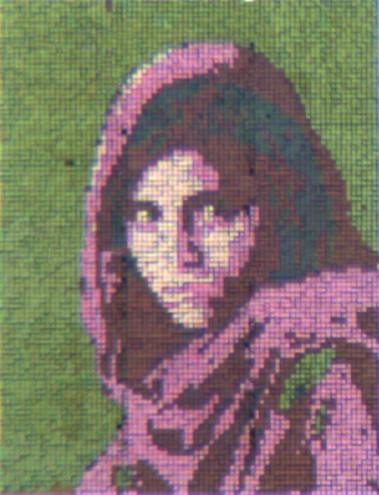Affiliate links on Android Authority may earn us a commission. Learn more.
Researchers develop the first skin-like flexible display

Flexible display technology has been gradually turning up in high-end gadgets, but research into even more flexible solutions is showing no signs of slowing down. A research team from the University of Central Florida, led by Professor Debashis Chanda, has developed the first-ever skin-like colour display, which is thin and flexible enough to be used alongside fabrics.
The research team’s technique could open the door to thin, flexible, full-color displays that could be built into plastics and synthetic fabrics. The technology is only a few micrometres (um) thick. That is considerably smaller than a human hair, which is typically around 0.1mm thick.
“This is a cheap way of making displays on a flexible substrate with full-color generation … That’s a unique combination.” – Dr. Chanda
The research team says that you could do all sorts of fun things with it, such as create a shirt than can change its colors and patterns on demand. If you’ve played any of the recent Metal Gear Solid games, it’s not far off from that crazy camouflage suit.
Inspiration apparently came from nature. Specifically, animals such chameleons, octopuses and squids, which can change their colors just by using their skin.
How does it work?
Traditional display components found in TVs or smartphones require a dedicated light source, be it an OLED or back-light. However, this color changing flexible display does not require a light source of its own, instead it reflects light back from its own surface.

This technique is accomplished using a thin liquid crystal layer placed over a metallic egg-carton shaped nanostructure. This shape absorbs some light wavelengths and reflects others, and the reflected light can be adjusted by passing different voltages through the liquid crystal layer, not unlike a regular LCD display.
Previous attempts at this type of display have resulted in limited colors and thicker designs. It’s the nanostructured metallic surface, as well as the interaction between liquid crystal molecules and plasmon waves, that enables the new design to offer such a wide range of colors with just a tiny footprint.
Potential products
As well as color changing clothes ranges, this type of technology could also improve on existing electronic products. TVs, laptops and smartphones could all be built with even thinner displays or new form factors. It also sounds like there’s potential for energy and cost savings too, which could help bring flexible display tech to the masses.
Not only that, but other types of wearable electronics could be born, such as fabric based wrist bands, and there’s potential for other types of displays that we probably haven’t seen yet. Of course, we’re going to need complementary developments in flexible and discrete processor, circuitry and battery technologies before any of these futuristic sounding products can end up on the market. But we’re getting there, one step at a time.